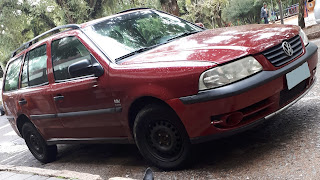One of the most controversial engines ever, the turbocharged 1.0L version of the EA111 which was only fitted to the Gol and Parati (pictured) between 2000 and 2004 was only available in Brazil. The reason behind its development was the tax bracket that benefits engines up to 1.0L in the local market, which is the only reason it ever became available. In contrast to naturally-aspirated versions of the same engine, either a 2-valves per cylinder SOHC (not available for the Parati) or a 4-valves per cylinder DOHC, the Turbo also featured variable valve timing on the intake. A quite sophisticated engine, it was meant to become somewhat of an indirect replacement to the 1.6L gasoline/petrol version of the EA827 series (the ethanol-powered version remained available as the sole 1.6L engine for the Gol and Parati for a brief period), but ended up rejected by the average buyer of the Gol and Parati range due to its complexity and more demanding oil specifications which were sometimes not observed so strictly by its owners. Rated at 112PS at 5500 RPM and 155Nm at just 2000 RPM, it had a single PS in advantage power-wise to the 2.0L EA827 rated at 111PS at 5250 RPM, which on the other hand still had a higher torque rating of 166Nm at 3000 RPM. And even though the 1.6L EA827 was disfavored on both power and torque with 92PS at 5500 RPM on the gasoline version or 97PS with gasoline and 99PS with ethanol at 5750 RPM on the early flexfuel trim, while the torque ratings were 135Nm at 3000 RPM for the gasoline-only and 136 to 140Nm with either gasoline or ethanol on the flexfuel, the right gear ratio could make such disadvantages less noticeable on normal operating conditions. Plus the fact the 1.6L and 2.0L were in fact cheaper to manufacture, owing much to the SOHC head with just 2 valves per cylinder and the natural aspiration, when the tax advantage for 1.0L engines became narrower around the end of 2002 the Turbo 16V engine started to not make so much sense as it seemed to make at the time of its release, which combined to the reliability records affected at some degree by a lot of maintenance neglect prevented further usage of this engine on other applications. Even the naturally-aspirated version of the 1.0L engine became less sought after by then, with its 69PS at 5750 RPM and 90Nm at 4500 RPM. It's also worth to notice this early approach to the downsizing was performed when direct injection was not so widespread on spark-ignition engines as it is nowadays, so in order to prevent knock it doesn't run so lean as the present-day 1.0TSI does...


No comments:
Post a Comment
Only comments written in English are published. Not so rigid about the grammar, but some regional slang should be avoided to make it clear and easily understandable.